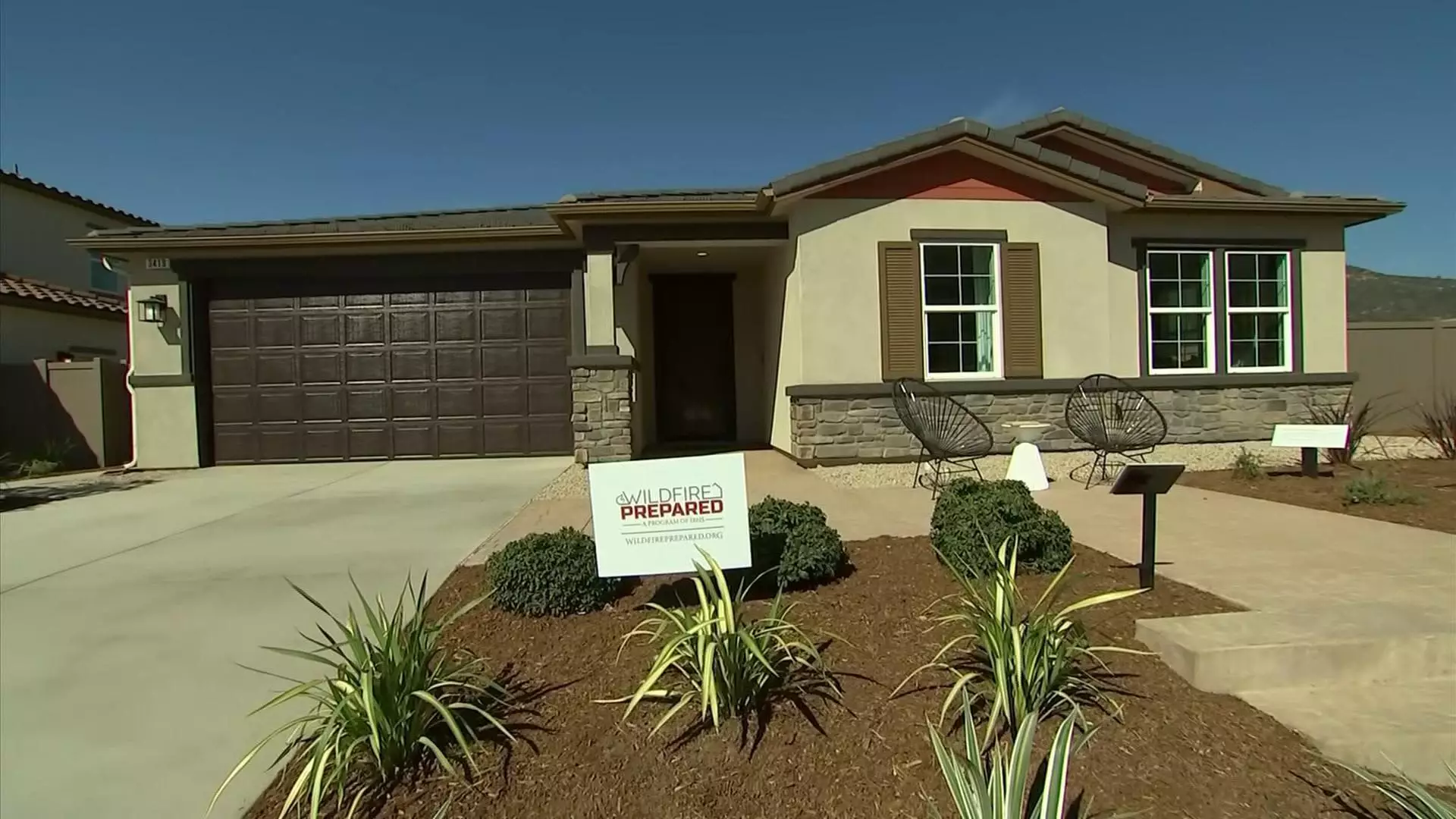In the aftermath of devastating wildfires, the urgency for innovation in housing design has never been clearer. KB Home, a California-based construction company, has recently announced a groundbreaking community of 64 wildfire-resilient homes in Escondido, just outside San Diego. This initiative isn’t merely a business endeavor; it is a calculated response to the catastrophic loss experienced by many families in the region. It’s an ambitious step that highlights the intersection of climate change awareness, technological advancement, and housing demands, presenting an opportunity that society must not overlook.
Wildfires have become an inescapable reality for many Californian communities. They pose a constant threat to life and property, forcing homeowners to grapple with skyrocketing insurance costs and the emotional toll of displacement. The emergence of fire resilience standards developed by the Insurance Institute for Business & Home Safety (IBHS) marks a crucial turning point. These guidelines focus on mitigating the three primary ignition sources in wildfires: flying embers, flames, and radiant heat. While some may view this development merely as a market response, it is a vigorous initiative indicative of necessary progress toward sustainable living.
An Architectural Evolution
The development in Escondido isn’t just about numbers; it is about real lives and future safety. The homes feature integral design elements that reflect a shift in building paradigm. With noncombustible siding materials, tempered glass windows, and fire-resistant patios, KB Home’s architecture effectively addresses the critical vulnerabilities that traditional homes often expose. By reimagining their designs on the fly—a rapid response prompted by the lessons learned at the Pacific Coast Builders Conference—KB Home signals a pioneering spirit, redefining the role of a home in a fire-prone state.
Moreover, the community is designed with ample space between homes to minimize fire spread, showcasing a thoughtful approach to urban planning. Steve Ruffner, the regional general manager of KB Home’s coastal division, aptly describes this project as a “test bed” for fire-resilient living. While the higher price point—the homes range from $1 million to the low millions—may deter some buyers, it forces a conversation about the value associated with safety and long-term insurance viability.
Mitigating Climate Challenges with Innovative Solutions
The increasing severity of droughts and wildfires due to climate change necessitates a shift towards innovative housing options. Climate scientists emphasize the growing urgency to address environmental risks, and this development represents a proactive measure not just for buyers but for communities at large. Homes built to withstand wildfires are no longer an eccentric luxury; they are becoming essential in a state where traditional homes have disintegrated under nature’s fierce onslaught.
However, it’s imperative to recognize that the endeavor faces colossal hurdles. Architects, builders, and city planners must craft not only resilient structures but also promote non-combustible landscaping and sensible urban design. Communities must evolve to encompass fire-smart practices at every level to enhance the effectiveness of these homes. The blending of resilience with the aesthetic appeal directly correlates with community buy-in, making it a crucial aspect of this movement.
The Future of Homeownership in a Fire-Prone Environment
As more companies, like KB Home, step forward with fire-resilient designs, this shift could catalyze a broader transformation in how homes are built across fire-risk regions. The notion of house as sanctuary is becoming even more pressing, and homebuyers should feel empowered to demand safety as a non-negotiable component of their investments. The community in Escondido stands as a maelstrom of opportunity for not just its inhabitants but for forward-thinking builders throughout California and beyond.
Nevertheless, we must temper this optimism with pragmatism. The recent history of wildfires serves as a stark reminder that the journey to safety is fraught with challenges. As Roy Wright, CEO of IBHS, aptly stated, “Nothing is ever fireproof.” Just as the community responds to current environmental challenges, it must also prepare for future adversities. Builders, government officials, and homeowners must collaborate to sustain this progress and navigate the complexities attached to insurance and climate adaptation.
This moment is an invitation for homeowners to refashion their expectations in a climate-altered world. Wildfire-resilient homes represent more than just products for sale; they symbolize a monumental shift in our understanding of sustainability, real estate, and personal safety. Building communities that thoughtfully prioritize resilience may indeed be our best chance at harmonizing human life with the realities of nature’s unpredictability.

